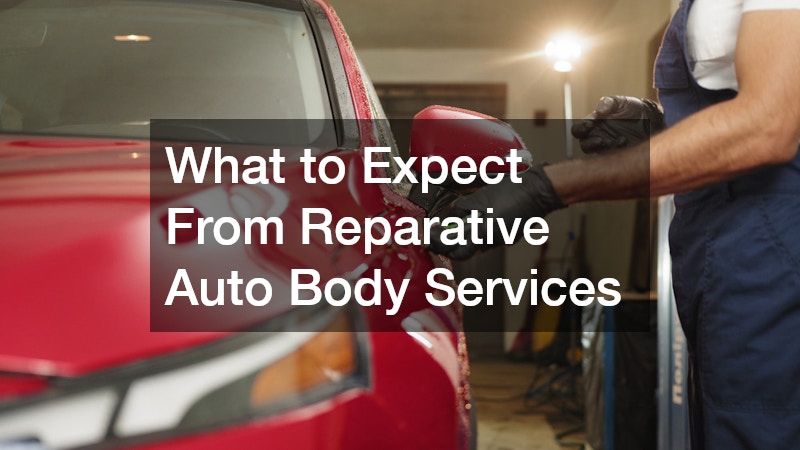
Reparative auto body services are crucial for maintaining both the aesthetic appeal and structural integrity of your vehicle. Whether your car has minor scratches or major collision damage, understanding these auto body services can be vital for making informed decisions. In this article, we'll explore the essential aspects of auto body repairs that every car owner should be aware of.
Video Source
From the common types of repairs to selecting a reliable shop, we will provide comprehensive insights into the process.
Dents and scratches can significantly detract from your car's visual appeal, but they are among the easiest issues to address. Technicians typically use techniques such as paintless dent repair or traditional bodywork to restore the vehicle's surface. Once assessed, professionals employ precise methods to ensure that repairs are both durable and practically invisible. Customers can expect their vehicles to appear as though no damage ever occurred, protecting aesthetic value and resale potential. It's noteworthy that paintless dent repair is often preferred for minor dents, as it preserves the original paintwork. This method can be more cost-effective and quicker, which is beneficial for both the car owner and the service provider.
Collision repair involves a comprehensive approach to restoring a vehicle after an accident, focusing on structural and cosmetic issues. The process begins with a detailed damage assessment, evaluating both visible and hidden damage. Technicians then proceed with parts replacement and structural repairs to ensure that safety and performance are uncompromised. Advanced technology and skilled craftsmanship are often necessary to return the vehicle to its pre-accident condition. Ensuring the frame and body panels are correctly aligned is crucial to maintaining performance standards. This meticulous approach underscores the complexity and skill required in collision repair.
Choosing a reputable auto body shop can be daunting, but focusing on credentials and certifications can provide peace of mind. Look for affiliations with recognized industry organizations, which indicate a commitment to quality and professionalism. Certain certifications, such as those from ASE (Automotive Service Excellence) or I-CAR (Inter-Industry Conference on Auto Collision Repair), reflect a standard of service excellence. These credentials indicate that technicians are trained and up-to-date with the latest repair techniques. Moreover, checking a shop's involvement in ongoing training and development ensures that they are prepared to handle a range of repairs effectively. This commitment to learning is a hallmark of a truly reliable service provider.
Customer reviews and testimonials offer valuable insights into the quality of service offered by an auto body shop. Reading firsthand accounts can reveal not only the results but also customer service quality and transparency during the repair process. Online platforms and review sites can provide a wide array of opinions to help you make an informed decision. High ratings and positive experiences noted by others can be significant indicators of a shop's reliability. It is also beneficial to pay attention to any recurring issues or praises mentioned in reviews. This can highlight consistent strengths or weaknesses, aiding in evaluating whether a shop meets your expectations.
The cost of auto body repairs can vary widely depending on several factors, including the extent of damage and parts required. Labor costs also significantly impact total expenses, especially for complex repairs. High-end or specialty vehicles may incur higher costs due to specific parts or more costly paint services. Understanding these variables can help you anticipate and plan for expenses accordingly. Moreover, the choice of repair method—such as whether paintless dent repair is feasible—can influence overall cost. It is important to discuss all available options with your auto body shop to determine the most cost-effective solution.
Repair duration can be just as variable as cost, influenced by factors like the extent of damage and parts availability. Simple scratch repairs may take only a few hours, while extensive collision damage can require several days or even weeks. Seasonal workloads or holiday periods can also affect shop timelines, potentially causing delays. Discussing timeframes with your repair service ahead of time can help set realistic expectations. Being proactive with scheduling and remaining flexible if issues arise can aid in minimizing inconvenience. Communicating openly with your shop about your needs and constraints is crucial for a smooth repair process.
In conclusion, understanding the intricacies of reparative auto body services ensures you are better equipped as a car owner. From identifying reliable repair shops to anticipating cost and timeframes, informed decisions lead to optimal outcomes.
